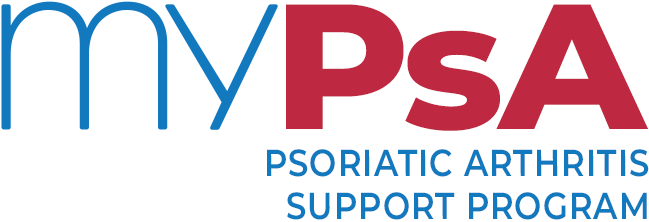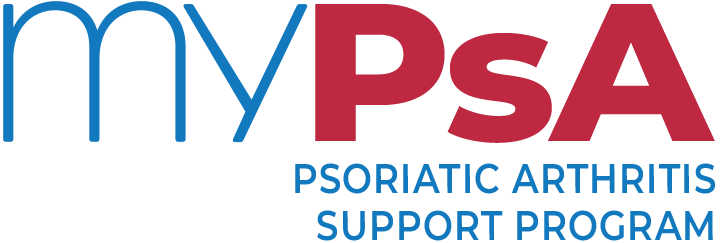
What is ustekinumab?
Ustekinumab (brand name: Stelara®) is a medicine used to treat adults with psoriatic arthritis, an inflammatory disease of the joints that is often accompanied by psoriasis. Ustekinumab is also used to treat adults with moderate to severe plaque psoriasis, that is chronic (lasts for a long time).
Ustekinumab is a monoclonal antibody which is a protein that recognises and binds to other unique proteins. Ustekinumab blocks the action of two proteins in the body that are made by your body's immune system. By blocking the two proteins, Ustekinumab may block the inflammatory pathways in psoriatic arthritis and psoriasis.
What benefit can you expect from your treatment?
Ustekinumab is a medicine used for patients who have severe active psoriatic arthritis. It does not work straight away. It may take a number of weeks for you to notice some relief of joint swelling, pain and stiffness.
Stopping Ustekinumab
If you stop or delay your Ustekinumab treatment, your condition may get worse. Keep on your treatment, unless told by your rheumatologist to stop or unless side effects occur (see Side effects).
If you stop Ustekinumab for any reason, you must contact your rheumatologist. Failure to do so may mean that your treatment may no longer be funded.
How is Ustekinumab given?
Ustekinumab is injected just under the skin (subcutaneously) of the abdomen or thigh. It is best to avoid (if possible) any areas of skin involved with psoriasis.
It can be injected by your doctor, nurse, carer or by you. If injecting yourself, be sure to follow the detailed instructions carefully to ensure the best response. It is particularly important to change the injection site each time.
Do not shake the vials of Ustekinumab at any time. Vigorous shaking may damage the product.
Vials that have been shaken vigorously should not be used.
If you forget to use it
If you forget an injection, make the next injection as soon as you remember and continue to use it as you normally would. Do not inject a double dose to make up for the one you missed.
If you have missed more than one dose or are not sure what to do, check with your doctor or pharmacist.
If you have used too much (overdose)
Contact your doctor straight away or go to your nearest hospital, even if there are no signs of discomfort or poisoning. You may need urgent medical attention.
What is the dosage?
Ustekinumab is a solution for injection that comes in a glass vial. Each vial contains 45mg of Ustekinumab. The usual dose of Ustekinumab is 45mg (the contents of one vial) injected when you start treatment, then again 4 weeks later, and every 12 weeks after that.
Can other arthritis medicines be taken with ustekinumab?
Ustekinumab may be taken in combination with other arthritis medicines, including:
- steroid medicines such as prednisolone or cortisone injections into the joint
- anti-inflammatory medicines (NSAIDs) such as naproxen (Naprosyn) or ibuprofen (Brufen/Nurofen)
- simple pain relieving medicines such as paracetamol.
There are separate information sheets for the medicines mentioned above.
How long is the treatment continued?
Treatment can continue with ustekinumab as long as it is effective and you are not experiencing any adverse effects. Your doctor will tell you how long to continue treatment with Ustekinumab. If you see no improvement in your symptoms after 28 weeks of Ustekinumab treatment, the treatment will be stopped.
Are there any side effects?
As with most medicines, ustekinumab may cause side effects in some people. You may need medical treatment if you get some side effects.
Tell your doctor if you are concerned about any possible side effects.
Most common possible side effects
The most common side effects with ustekinumab are upper respiratory infections such as sinus infection, sore throat or headache. These are usually mild. Tell your doctor if you are concerned, or if the side effects persist for a long time.
Less common or rare possible side effects
Other less common side effects include dental infections, injection site pain or redness, skin rash or itchiness, diarrhoea or nausea, tiredness or depression.
- There are some rare but potentially serious side effects with ustekinumab.
- Serious allergic reaction: Signs of a serious allergic reaction may include a skin rash, a swollen face, lips, mouth or throat, or wheezing, dizziness, trouble swallowing or breathing.
- Tell your doctor or go to the hospital immediately if you have an allergic reaction as you need urgent medical attention.
- Serious infections: Ustekinumab may lower your ability to fight infections. Some infections could become serious and you may need to be admitted to hospital. If you have an infection before you start treatment with ustekinumab, you must tell your doctor. If you get an infection while on ustekinumab, tell your doctor straight away.
Other side effects not listed here may also occur. Tell your doctor if you notice any other side effects that you think might be caused by ustekinumab.
What precautions are necessary?
Infections
If you have an active infection, treatment with Ustekinumab will not be started until the infection is treated successfully. Serious infections such as tuberculosis (TB) are seen rarely, and screening for TB may be needed before treatment begins.
Use with other medicines
- Ustekinumab can interact with some other medicines. You should tell your doctor (including your general practitioner, rheumatologist and others) about all medicines you are taking or plan to take. This includes over the counter or herbal/naturopathic medicines. You should also mention your treatment when you see other health professionals.
- Some medicines that ustekinumab may interfere with, include warfarin, and cyclosporin. Make sure your doctor is aware if you are taking these medicines.
- While being treated with ustekinumab, you must not receive live vaccines. Tell your doctor if anyone in your house needs a vaccine. The viruses in some vaccines can spread to people with a weakened immune system and can cause serious problems.
Vaccines
- While being treated with Ustekinumab you should not be immunised with ‘live’ vaccines such as: MMR (measles, mumps and rubella), Varicella vaccines (Chicken pox/Shingles), OPV (oral polio virus), BCG (Bacillus Calmette Guerin), Japanese Encephalitis or Yellow Fever. Talk with your rheumatologist before receiving any vaccines.
- Pneumococcal vaccines and the yearly seasonal flu vaccinations are encouraged.
- For more information on vaccination including the COVID-19 vaccination click here.
Surgery
If you require surgery for any reason, you should discuss this with your rheumatologist as some people need to stop taking Ustekinumab before surgery
Pregnancy, breastfeeding and fertility
- The effects of ustekinumab during pregnancy have not been well studied, so it is not clear if it causes birth defects.
- If you are pregnant or are considering having a child, you should discuss this with your doctor before beginning this medication.
- Ustekinumab is likely to be excreted in the breastmilk of lactating women. Women who are breastfeeding should talk to their doctor about whether or not to use ustekinumab.
- More detailed information is available: here
How to store ustekinumab
- Store ustekinumab in the refrigerator, between 2ºC and 8ºC. Do not freeze. Keep the vials in the original carton to protect them from light until the time of use. Do not shake the vials.
- Keep all medicines out of reach of children.
- Do not leave ustekinumab in the car, on windowsills or in the bathroom. Heat and dampness can destroy some medicines.
Disposal
- After injecting ustekinumab, the used syringes should be placed in a puncture-resistant container, like a sharps container. Dispose of your sharps container according to your state or local regulations. If unsure how to dispose of your sharps container, ask your pharmacist.
- Empty vials, antiseptic wipes, and other supplies can be placed in the regular rubbish.
- If your doctor tells you to stop using ustekinumab, or the expiry date has passed, ask your pharmacist what to do with the leftover medicine.
Important things to remember
- While taking ustekinumab you must see your rheumatologist regularly to make sure the treatment is working and check for possible side effects.
- Remember to change the injection site each time ustekinumab is injected.
- If you are worried about any side effects, you should contact your rheumatologist as soon as possible.
- It is important to tell your rheumatologist if you have had cancer or if you develop cancer.
- If you stop Ustekinumab for any reason you must contact your doctor. Failure to do so may mean that your continued treatment will no longer be funded.
- If you plan to become pregnant you must discuss the timing with your rheumatologist.
- You should continue to take it even if you do not have symptoms.
The information in this sheet has been obtained from various sources and has been reviewed by the Australian Rheumatology Association. It is intended as an educational aid and does not cover all possible uses, actions, precautions, side effects, or interactions of the medicines mentioned. This information is not intended as medical advice for individual problems nor for making an individual assessment of the risks and benefits of taking a particular medicine. It can be reproduced in its entirety but cannot be altered without permission from the ARA. The NHMRC publication: How to present the evidence for consumers: preparation of consumer publications (2000) was used as a guide in developing this publication.
Last reviewed June 2022.










